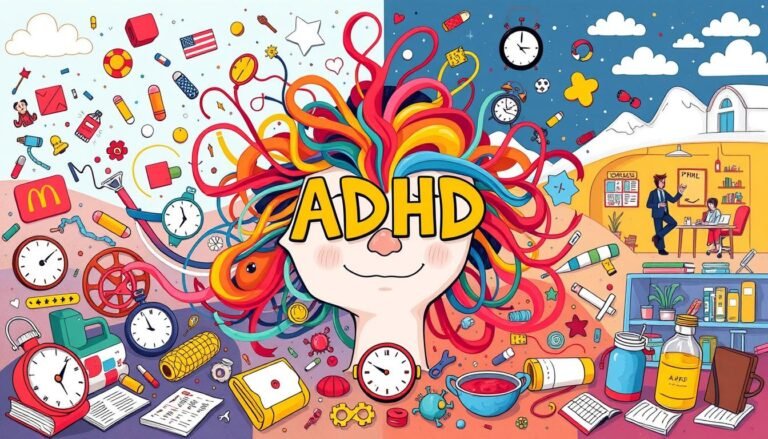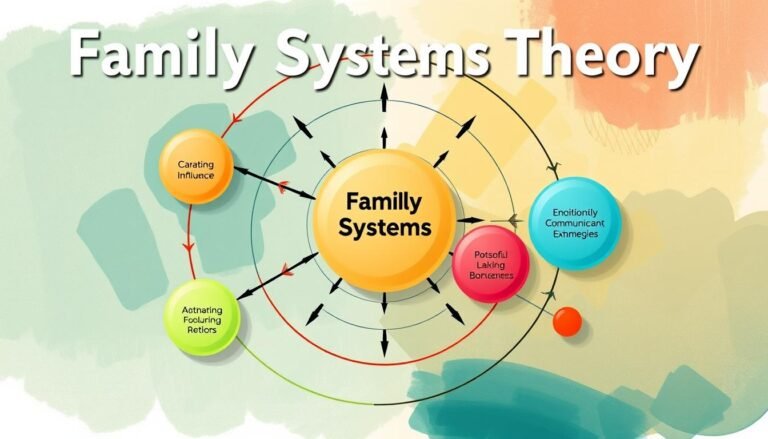Understanding Behavioral Theory: Key Concepts
Have you ever thought about why we act the way we do? Behavioral theory gives us interesting answers. It’s based on what we can see and has changed how we see human behavior for over a hundred years.
Behavioral theory, also known as behaviorism, started in the late 1800s. It moved away from thinking about our inner thoughts to focusing on what we can see. This big change helped shape psychology.
Important figures like J.B. Watson and B.F. Skinner said our actions mostly come from our surroundings. They thought learning was the main reason for our behaviors, not genetics or instincts.
This idea has greatly influenced education and therapy. For example, positive reinforcement, a key part of behaviorism, is used in schools. It helps encourage good behavior in students.
Even though behaviorism was big in psychology from the 1920s to the mid-1950s, it got some criticism. People said it ignored what goes on inside our minds. But, its focus on what we can see and our environment still shapes psychology today.
Introduction to Behavioral Theory
Behavioral theory started in the early 20th century and changed psychology a lot. It looks at what we can see and how our environment affects us. It doesn’t use methods that try to see inside our minds, instead, it focuses on what we can measure and see.
Origins of Behaviorism
Behaviorism came as a response to the old way of studying psychology. John B. Watson, inspired by Ivan Pavlov, started this new field. He believed that studying what we can see and do is more important than trying to understand our thoughts and feelings.
Key Figures in Behavioral Psychology
Many psychologists helped shape behaviorism:
- John B. Watson: Founder of behaviorism
- B.F. Skinner: Developed operant conditioning
- Ivan Pavlov: Discovered classical conditioning
- Edward Thorndike: Introduced the law of effect
Core Principles of Behavioral Theory
Behavioral theory is based on a few main ideas:
- It focuses on what we can see and do.
- It looks at how things around us affect our actions.
- It believes we learn through conditioning.
- It says our environment shapes who we are.
These ideas are the heart of behaviorism. They help us understand how even complex behaviors can be simple patterns of response to stimuli.
| Type of Behaviorism | Description | Key Concept |
|---|---|---|
| Methodological Behaviorism | Focuses on observable behavior | Objective measurement |
| Radical Behaviorism | Considers past and present environmental influences | Complete behavioral analysis |
Classical Conditioning: Foundation of Behavioral Learning
Classical conditioning is a key part of how we learn. It was first discovered by Ivan Pavlov in the late 1800s. He showed how things we don’t naturally react to can become linked to our responses.
Pavlov’s Dogs Experiment
Pavlov rang a bell before feeding dogs. At first, dogs only salivated when they saw food. But after many times, they started to salivate when they heard the bell. This showed how a neutral thing (the bell) can make us react like it’s connected to something we naturally react to (food).
Stimulus-Response Sequence
The process of classical conditioning has several parts:
- Neutral Stimulus: A stimulus that doesn’t trigger a response at first
- Unconditioned Stimulus: A stimulus that naturally causes a response
- Unconditioned Response: The natural reaction to the unconditioned stimulus
- Conditioned Stimulus: The neutral stimulus that now elicits a response
- Conditioned Response: The learned reaction to the conditioned stimulus
Applications in Everyday Life
Classical conditioning is used in many ways. It’s seen in ads to make products seem appealing, in therapy to help people overcome fears, and in schools to manage classrooms.
| Application | Example |
|---|---|
| Advertising | Pairing a product with a popular song to create positive associations |
| Phobia Treatment | Gradual exposure to feared objects or situations in a safe environment |
| Classroom Management | Using a specific sound to signal the start of an activity |
Operant Conditioning: Shaping Behavior
Operant conditioning is a key part of behavioral psychology. It focuses on changing behavior through consequences. B.F. Skinner, a leading figure, changed how we see learning and changing behavior.
B.F. Skinner’s Groundbreaking Work
Skinner found that behavior is shaped by its results. He discovered three main types: neutral operants, reinforcers, and punishers. This work helped us understand how actions are learned and repeated.
The Power of Reinforcement
Reinforcement is crucial in operant conditioning. Positive reinforcement makes behavior stronger by adding something good. For instance, a coach’s praise can make an athlete want to succeed more.
Negative reinforcement also plays a role. It makes behavior stronger by taking away something bad.
Understanding Punishment
Punishment is used to reduce bad behavior. Positive punishment adds something bad, while negative punishment takes away something good. For example, losing pay for being late is a form of negative punishment.
| Concept | Definition | Example |
|---|---|---|
| Positive Reinforcement | Adding a rewarding stimulus | Praising good performance |
| Negative Reinforcement | Removing an unpleasant stimulus | Stopping a loud noise when task is completed |
| Positive Punishment | Adding an aversive stimulus | Giving extra work for misbehavior |
| Negative Punishment | Removing a desirable stimulus | Taking away privileges for poor behavior |
Operant conditioning is used in many areas, like education and therapy. By knowing these principles, we can guide behavior in different places. This helps bring about good results and stops bad actions.
Behavioral Theory in Education
Behavioral Learning Theory is key in Educational Psychology. It looks at how students react to their surroundings, shaping their actions through stimuli and responses. Teachers use these ideas to better manage classrooms and improve learning.
Education based on behaviorism focuses on what can be seen. It uses methods like feedback, rewards, and shaping to change behavior. Many teachers start with routines, showing students what they should do.
The University of Phoenix has programs for graduate education. These teach how to use behaviorism in making curricula. Students learn about learning psychology and developmental psychology, helping them create effective teaching plans.
“Behaviorism focuses on understanding behavior as a response to environmental stimuli, placing less emphasis on unobservable psychological phenomena.”
Behaviorism has its good points but also its downsides. It mainly deals with automatic responses, which can be a problem in teaching. So, many teachers mix behaviorism with other theories for a better approach.
| Behaviorist Technique | Application in Education |
|---|---|
| Positive Reinforcement | Praising students for good performance |
| Negative Reinforcement | Removing homework for improved grades |
| Shaping | Gradually guiding students towards desired behaviors |
| Modeling | Demonstrating proper conduct in class |
By using Behavioral Learning Theory, teachers can make learning environments better. This helps improve how well students do in school.
The Role of Cognition in Behavioral Psychology
Behavioral theory has grown to see how important thinking is in shaping our actions. This change is a big step in understanding how we think and act.
Cognitive Processes and Behavior
Cognitive psychology looks into how our brains handle information. The human brain, with its 86 billion neurons, is incredibly complex. It can handle detailed thinking and making choices.
The cerebral cortex, a key part of the brain, is vital for thinking. It helps us process information.
Integration of Cognitive and Behavioral Approaches
The cognitive-behavioral approach brings together insights from both fields. It shows that we learn about ourselves, others, and relationships. This knowledge shapes how we think and act in social settings.
Limitations of Pure Behaviorism
Pure behaviorism can’t fully explain complex human behaviors. It doesn’t consider how we each see things differently. This can cause disagreements.
The cognitive-behavioral approach fixes this by looking at both what we do and what we think. It’s more complete.
Cognitive-behavioral therapy (CBT) is a great example of this. It’s used a lot in treating substance abuse. It combines behavioral and cognitive learning to tackle specific problems quickly.
Motivation and Emotion in Behavioral Theory
Behavioral Psychology sees the big part that motivation and emotion play in our actions. The idea of drive, started by Robert S. Woodworth in 1918, helped us understand what drives us. Clark Hull built on this in the 1940s, creating a detailed model of drive that shapes our actions today.
Classical conditioning is a key part of Behavioral Psychology, showing how emotions can be learned. John B. Watson and Rosalie Rayner’s work showed how we can learn to feel fear or joy. For example, we might feel scared at a loud noise or happy at the smell of cookies.
Operant conditioning shows how consequences shape our future actions. It’s the base of many motivational plans in schools, workplaces, and therapy. For instance, token economies based on rewards have worked well in many places.
“Emotions significantly impact how individuals interact with others, exerting influence on attention and behavior.” – Burr et al., 2021
Motivation has two types: extrinsic and intrinsic. Extrinsic motivation comes from outside rewards like grades or promotions. Intrinsic motivation comes from personal satisfaction. Both are important in guiding our actions. Even fear, a strong emotion, can push us to act when there’s no obvious reward.
Knowing about Motivation and Emotion is key for using Behavioral Psychology in real life. It helps improve work productivity and create better therapies. These insights keep shaping how we understand human behavior.
Applications of Behavioral Theory in Therapy
Behavioral theory is key in treating mental health issues. It’s the foundation for many therapies. These help people deal with their mental challenges. Let’s see how behavioral principles work in therapy and their success in treating mental disorders.
Behavioral Interventions
Behavioral Therapy uses learning principles to change bad behaviors. It focuses on actions, not thoughts. For instance, systematic desensitization helps people face fears slowly. Exposure therapy directly faces situations that cause anxiety.
Cognitive-Behavioral Therapy
Cognitive-Behavioral Therapy (CBT) mixes behavioral methods with changing thoughts. It tackles both actions and thoughts. This makes CBT a flexible treatment for many problems, like depression and anxiety.
Effectiveness in Treating Psychological Disorders
Studies show behavioral therapy works well for many mental health issues. About 67% of people see positive changes with psychotherapy. CBT, seen as top-notch, can help in just 5 to 20 sessions.
| Disorder | Effectiveness of CBT |
|---|---|
| Anxiety | Highly effective |
| Depression | Very effective |
| Substance Abuse | Effective for relapse prevention |
| Anger Issues | Highly effective |
| Stress | Very effective |
Behavioral therapy is great for managing stress and anger. It works for all ages, even kids. But, how well it works depends on the disorder and the person.
Conclusion
Behavioral psychology has greatly changed how we see human behavior and learning. It started with John Watson in 1913 and has grown since. Ivan Pavlov and B.F. Skinner’s work has been key in shaping this field for over a century.
Behaviorism focuses on what we can see and do, and how our environment affects us. Skinner’s operant conditioning theory is a big part of this. It uses rewards and punishments to change behavior, which is used in schools and therapy.
At first, behaviorism was criticized for ignoring what goes on inside our minds. But now, it combines with cognitive psychology. This mix has led to better learning theories and therapies like cognitive-behavioral therapy. Even with its flaws, behaviorism still helps us understand and improve human behavior and learning.
Source Links
- What Is The Behavioral Learning Theory?
- Why Behaviorism Is One of Psychology’s Most Fascinating Branches
- An Introduction to Behavioral Psychology – Rivier Academics
- Behaviorism in Education: What Is Behavioral Learning Theory?
- What Is Classical Conditioning?
- 8.1 Learning by Association: Classical Conditioning
- 3.1 Behaviorist Theories of Learning
- Operant Conditioning In Psychology: B.F. Skinner Theory
- What Is Operant Conditioning?
- What is Behaviorism in Education? | University of Phoenix
- Theory of Behaviorism in Learning
- 1.2 Affect, Behavior, and Cognition
- Chapter 4—Brief Cognitive-Behavioral Therapy – Brief Interventions and Brief Therapies for Substance Abuse
- Motivation – Behaviorism, Drive, Reinforcement | Britannica
- Motivation and Emotions: Influence on the Behavioral Patterns | Psychology Paper Example
- Understanding Behaviorism
- How Behavioral Therapy Works
- Behavioral Perspective Psychology And Real-World Applications
- Behaviorism
- Behaviorism: A Critical Look
- Behaviorism, Key Terms, History, Theorists, Criticisms and Implications for Teaching – Educational Technology








